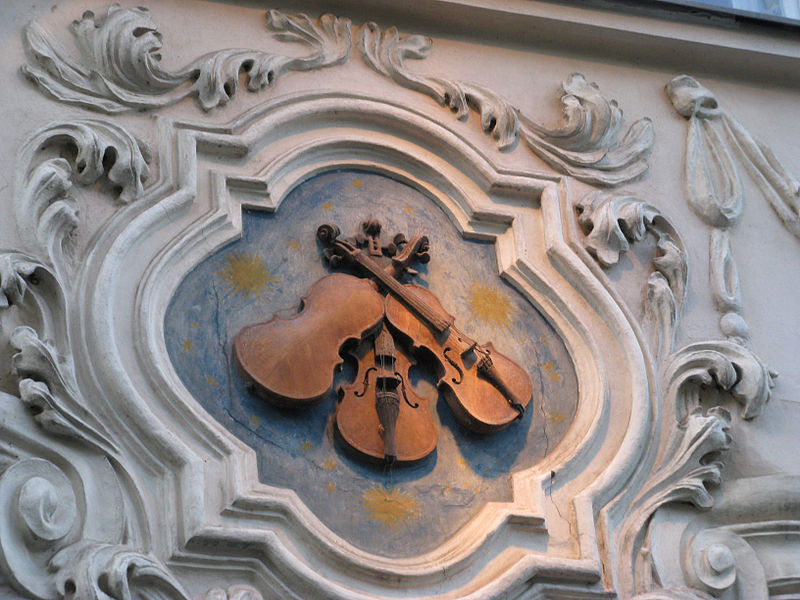The cobblestone streets of Prague are not just witnesses to a rich history, but they are adorned with captivating details that make every stroll a unique experience. Among these details, street signs stand out – small works of art that tell hidden stories and reflect the culture and imagination of the city. From animals to mythological figures, these signs capture the attention of passersby and transport them into an enchanted world of shapes and colours.
Domestic signs originated during the Middle Ages. When people needed to navigate the labyrinth of streets, the signs on houses and their names served as practical aids in identifying the residents of a specific house or building. Many of these signs featured symbols or images related to the occupants’ trades or professions. For instance, a sign with a pair of scissors would indicate that a tailor lived in the building, while a sign with a hammer and anvil would indicate a blacksmith.
However, in the 1770s, Empress Maria Theresa of Austria introduced a standardized system of progressive street numbering, which consisted and still consists of the use of two different house numbers. The first number, known as the descriptive number, is displayed on a red background. The second number, referred to as the reference number, appears on a blue background. As a result, it’s common to find both a house sign and two numerical identifiers in most buildings.
Animal Forms
The most popular element of Prague’s house signs is undoubtedly animals. Each animal holds a symbolic and historical significance intertwined with the city’s topography and daily life.
For instance, the “U Prince” sign depicts a noble horse, recalling the historical importance of horses in city ceremonies. The golden tiger on the “U Zlatého Tygra”, a pub that boasts a visit by former president Bill Clinton during the ‘90s, suggests a connection to the exotic and the regal. The gryphon, a mythological creature half eagle and half lion, is often portrayed on signs and crests as a symbol of strength and nobility.
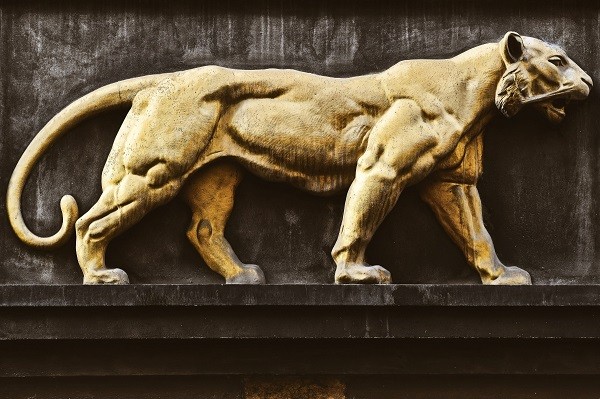
On Na Perštýně Street, the restaurant and brewery “U Medvídků” (At the Little Bear) displays a sign featuring a bear, which, other than referencing the establishment’s name, represents power and steadfastness.
Signs of restaurants and cafes frequently incorporate animals like chickens, pigs, and rabbits, reflecting the city’s culinary tradition.
Plant Forms
Signs in the shape of botanical elements are equally evocative. The “U Tří růží” (At the Three Roses) sign features three intertwined roses, symbolizing beauty and mystery, creating a romantic and captivating image that resonates with the establishment’s name. Signs with oak leaves or floral garlands like “U Zlatého Stromu” (At the Golden Tree) can evoke the lush nature and abundance found within these premises.
Prague’s street signs often incorporate botanical elements such as leaves, flowers, and intertwined branches. These depictions reflect the city’s deep connection with nature and the importance of natural resources in its history and daily life.
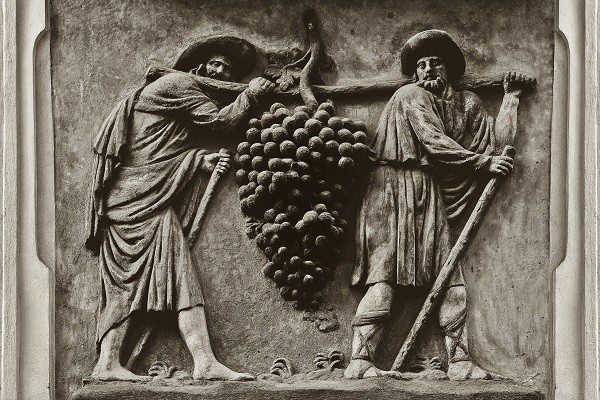
Highly popular symbols included grapes; examples include the “U Modrého Hroznu” (At the Blue Grape) on Husova Street and the “U Zlatého Hroznu” (At the Golden Grape) house on Malostranské náměstí. Even exotic elements like a pumpkin or a melon adorned the signs of medieval Prague’s houses, particularly on the U Zlatého melounu (At the Golden Melon) house on Michalská Street.
Magical and Mythical Forms
Signs that evoke the magical and mythological atmosphere of Prague are not lacking. Dragons, fairies, and mythical creatures adorn many signs, bringing a touch of magic to the city. These signs are often tied to local stories and legends, adding an element of mystery to the urban landscape.
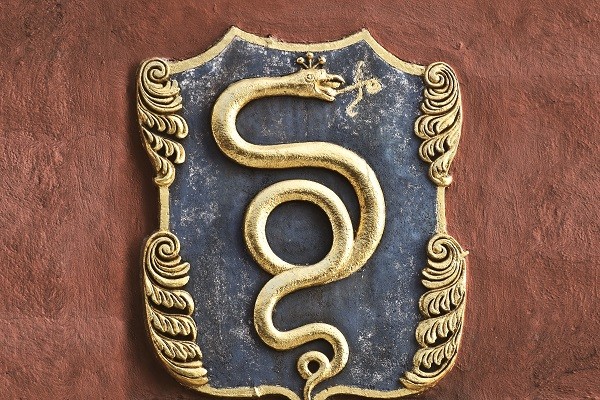
The sign of “U Zlatého Hada” (At the Golden Serpent) features a winged serpent, a legendary creature that suggests hidden secrets and powers. Likewise, the “U Zlatého Draka” (At the Golden Dragon) ‘s iconic sign portrays a mighty dragon, paying tribute to the legendary figure of the dragon that was believed to have protected Prague.
Celestial Bodies and Angels
From the old houses of Prague, a colourful display of celestial bodies still shines through the streets: stars, suns, moons, comets, and rainbows. One of the most famous is the “U Dvojího Slunců” (“At the Two Suns”) house in Malá Strana. This house sign is particularly famous because it is associated with the Czech writer Jan Neruda. The house was once Neruda’s residence, and he was well-known for his literary works and journalism during the 19th century. The sign itself depicts two suns, one larger and one smaller, which are believed to symbolize Neruda’s dual identity: his role as a poet and his work as a journalist.
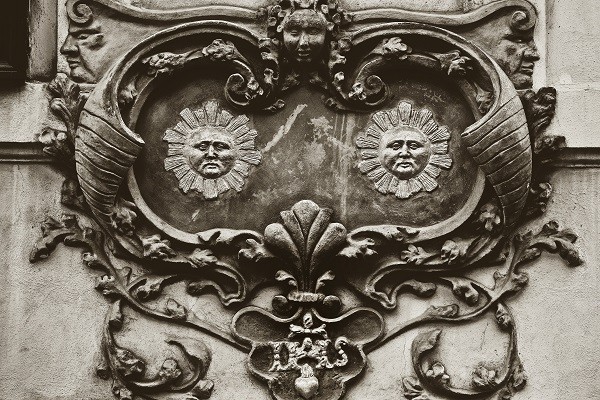
The sign of the restaurant “U Červené Židle” or “The Red Chair” depicts a crescent moon, an astral symbol that adds an air of mystery to the establishment’s atmosphere. The sign of the “U Zlatého Anděla” (“At the Golden Angel”) features a golden angel, which adds a touch of elegance and mystique to the building’s facade.
Historical and Cultural Symbolism
Prague’s street signs are not just an expression of creativity but also a means to preserve the city’s cultural identity. In addition to natural forms, many street signs carry a load of historical and cultural symbolism. These signs serve as bridges between the past and the present, connecting modern Prague to its historical roots. Many of these signs are handcrafted by local artisans using traditional techniques of woodworking and painting. This commitment to craftsmanship and tradition helps keep Prague’s cultural heritage alive.
“U Pinkasu” (The Pink): The sign of this restaurant features a large pendulum clock, a distinctive element that adds a touch of history and tradition.
“U Fleku” (At Flek’s): This famous brewery has an original sign that combines the name “At Flek’s” with a large beer bottle, symbolizing the importance of the beverage in the establishment.
“U Českých Pánů” (At the Czech Gentlemen): The sign of this restaurant features traditional Czechoslovak figures in typical attire, representing the culture and national identity of the time.
In conclusion, the street signs in Prague are far more than simple indicators. They stand as artistic works, bearing witness to a city that embraces symbolism, art, and history. Each sign extends an invitation to uncover the wonders hidden behind every corner of the cobblestone streets in this captivating city.
Presently, the quantity of house signs in Prague has notably diminished. Nonetheless, those that continue to grace the most prominent locations hold the significance of a kind of nostalgic reverence for a past era. Although their influence has waned, a semblance of their essence has managed to endure into our present times.
Photos: Robert Bláha

